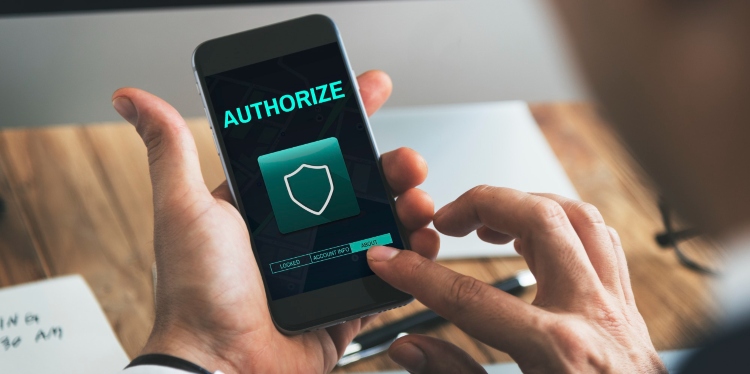E-wallets, also known as digital or mobile wallets, are secure digital applications that store payment methods like debit or credit cards so that users do not have to carry physical cards. They allow you to transfer money, make online purchases, make contactless in-store payments, and manage your finances all in one place.
eWallets have built-in security features to prevent fraudulent activities, theft, and loss. However, they are still sensitive to cyber attacks such as phishing, data breaches, and identity theft. This article explores the security of eWallets and provides ways to safeguard your funds and personal data.
Everyday Applications of eWallets
eWallets are quite versatile and can be used in a variety of ways and can be used to make payments or purchases on different e-commerce platforms like Amazon, which streamlines your online shopping experiences. eWallets like PayPal, Apple Pay, and Google Pay can be used for contactless payments using mobile devices through Near Field Communication (NFC) technology instead of a physical card.
eWallets like Skrill and Neteller are popular with many online casino players due to their fast, secure payment methods. They can hold various forms of currency, including traditional currencies like the Euro or Dollar and cryptocurrencies like Bitcoin and Ethereum, which several Non-GamStop casinos accept (source: https://gamcaretradeservices.com/). They allow players to easily switch between fit currency and cryptocurrencies to play their favorite casino games.
Many top online casinos not on Gamstop, for example, accept eWallets since they offer players several advantages, including quick withdrawals, instant deposits, and anonymity. eWallets also helps keep players’ financial information private, ensuring that casinos only see the eWallet details rather than personal banking information.
eWallets often extend beyond mere transactions, containing features like
- Bill payments: Google Pay allows users to pay utility bills like gas and water through their app.
- Peer-to-peer transfers: Apple Pay, for instance, has an Apple Pay cash feature that allows you to send and receive money through the iMessage App.
- investment options: Google Pay has a feature that integrates investment platforms like Wealthfront, allowing you to view and manage your investment accounts within the e-wallet app.
How E-wallets Work
E-wallets digitally store your personal and financial information, such as your banking details. When you initiate a transaction using your e-wallet, you securely communicate with your financial institution to authorize and process the funds transfer.
E-wallets store users’ personal and financial information, such as bank account details or credit/debit card information, in a digital format. When a user initiates a transaction using an e-wallet, the e-wallet securely communicates with the relevant financial institution to authorize and process the funds transfer.
This process involves robust encryption protocols and technologies like tokenization to protect sensitive user data from interception or unauthorized access. E-wallets use advanced security measures such as encryption, biometric authentication, and multi-factor authentication to safeguard your sensitive information and transactions.
How to Secure your eWallet
eWallets depend heavily on technology and connectivity and can be subject to technical issues and failures. Additionally, security issues like phishing scams and data breaches can expose its users’ personal and financial data. For instance, the mobile payment app Bharat Interface for Money (BHIM) experienced a security breach. A security research team at vpnMentor found over 7 million records of BHIM users’ sensitive personal and financial data were exposed publicly due to a misconfigured Amazon Web Services S3 bucket. This left their users at risk for identity theft, fraud, and more.
Additional security measures can be taken to safeguard your e-wallet:
Choose a Reputable Provider
Select an eWallet provider with a proven track record of prioritizing security measures. Ensure that the e-wallet provider you choose has robust security measures in place, like encryption, tokenization, and multi-factor authentication, and complies with regulatory and industry standards.
Be Cautious of Public WiFi
Avoid accessing your e-wallet accounts over an unsecured public WiFi network. Public Wi-Fi networks are inherently insecure, as they are open for anyone to use and the data transmitted over them is not encrypted. This makes public Wi-Fi networks vulnerable to eavesdropping, man-in-the-middle attacks, and other hacking attempts that can compromise user data.
Enable Multi-Factor Authentication
Set up multi-factor authentication (MFA) or one-time codes sent to your phone to add an extra layer of security, which is vital with any financial service. MFA adds an extra layer of security beyond just a username and password, making it much harder for unauthorized users to access the e-wallet. Biometric authentication like fingerprint or facial recognition, as well as one-time codes sent to the user’s phone, provide stronger verification of the user’s identity.
Backup eWallet Data
Regularly back up your e-wallet data to protect against loss or theft of your device. By doing so, you can ensure that you can restore your wallet and regain access to your digital assets if your device is lost, damaged, or compromised.
David Prior
David Prior is the editor of Today News, responsible for the overall editorial strategy. He is an NCTJ-qualified journalist with over 20 years’ experience, and is also editor of the award-winning hyperlocal news title Altrincham Today. His LinkedIn profile is here.













































































